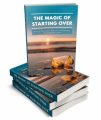Salespage Snapshot:

>>> Click Here To View Full Sales Page…
Table of Contents
Introduction ……. 3
Chapter 1 – Your Current State . 5
How to Calculate Your Body fat Percentage and Lean Mass . 5
Calculating Your Genetic Potential 7
Calculating Your AMR and BMR ….. 8
Chapter 2 – Maintaining Your Caloric Surplus . 11
Why Your Calorie Surplus is So Important … 11
How Many Calories Do You Need? …… 12
Chapter 3 – Understanding Macros 14
Protein .. 15
Energy … 16
Chapter 4 – On Nutrients and Hormones 18
Why Aren’t I Growing? The Hormones Element .. 19
Chapter 5 – IIFYM IRL ……. 23
What to Eat .. 24
Bulk Eating Tips …. 25
Chapter 6 – Adding Supplements …. 27
Chapter 7 – The Workouts ……. 30
How Training Builds Muscle . 30
How to Lift for Size ……. 31
Your Program ……. 33
Chapter 8 – Closing Comments and Living the Lifestyle .. 34
Sample Content Preview
Chapter 3 – Understanding Macros
In bodybuilding circles, there is a diet called IIFYM. This stands for ‘If It Fits Your Macros’ and it essentially means that you can eat anything you like, as long as you eat within certain parameters. The concept began life on forums like Bodybuilding.com in fact as a response to a lot of inane questions. People were repeatedly asking: “Can I eat donuts?” or “Can I eat chicken with the skin on?” and the answer would always be: “Yes, if it fits in your macros!”. This was eventually shortened to IIFYM (as a joke as much as anything) which eventually evolved to become practically a diet in and of itself. The IIFYM diet!
This is broadly speaking the diet that we’re going to be following in order to bulk! However, there are certain caveats here as we’re also going to see.
So perhaps the best place to start is: what is a macro?
Essentially, a macro is a ‘macronutrient’, which is effectively another term for a food group. Macronutrients include protein, carbohydrates and fats and together, these effectively make up your caloric intake. We don’t count fiber because fiber doesn’t contain any calories (it just passes straight through!).
Protein and carbs both count for 4 calories per gram. So if you eat 10 grams of protein, that is 40 calories. Fat meanwhile contains 9 calories per gram.
Seeing as you know that you can eat, let’s say, 2700 calories, this then means you want to work backwards in order to decide how much of that is going to consist of protein, carbs and fats respectively. And the answer to this is going to depend once again on various different aspects regarding your biology.
Let’s take a look…
Protein
When it comes to building muscle, the most important thing is that you are eating a LOT of protein. Protein is basically meat and plant matter – carbon – and this is broken down to create amino acids. You may have heard that we are ‘carbon based lifeforms’ which basically tells you that humans are made from carbon.
So when you consume protein, you are eating the literally building blocks that compose your body. This means protein can help you to repair cuts and bruises, to rejuvenate skin cells, to grow and crucially to grow muscle.
Thus begins the cycle of muscle building: you work out to break down your muscle fiber and then you provide your body with rest and with protein which allows it to restore it again and build it back up. If you’re not getting the protein, then you’re not providing your body with what it needs to restore muscle. And that means that you won’t grow – in fact you’ll just become weaker!
So now the question becomes how much protein you need. And fortunately, you have a very easy and simple answer for that question: 1 gram of protein for every lb of bodyweight. So if you weigh 170lbs, you need to eat 170 grams of protein. This will net you 680 calories, which means you now have 2,020 calories left to divide between fats and carbohydrates!
Why 1 gram for each pound? That’s simply what has been shown to be optimal in studies. Countless studies have looked at this question and all of them have found that this amount leads to the optimal amount of muscle growth. And you can of course go above this number – heading closer to 1.2 or 1.3 grams (around 884 calories) but this will start to reach the point of ‘diminishing returns’.
Energy
So now the question is where you’ll get your energy from and the answer is that it again partly depends on you and on your aims. Of course the objective is always going to be minimizing fat gain while maximizing muscle gain and in that regard there are two schools of thought.
One is that you should eat more carbs and less saturated fat.
And one is that you should eat more saturated fat and fewer carbs.
Tricky!
So perhaps it’s best if we assess each stance. Those who favour saturated fat do so because they believe it will minimize weight gain. It can do this because saturated fat is a slow release form of energy. That is to say, that it takes a long time for the body to break it down and use it as energy. This means that it will slowly release energy into your bloodstream, thereby enabling you to go for longer without snacking and prevent you from getting a sudden sugar spike. The concern with carbs is that they quickly release their energy into the body, causing a sudden spike in blood sugar which is then immediately followed by a spike in insulin. That insulin causes the body to use up all of the available glucose in the blood, thereby leaving you feeling exhausted and drained. This is one reason that we often feel sleepy after we’ve eaten!
Saturated fat also has a lot of health benefits (the good kind), because it aids with nutrient absorption (helping you to get the goodness from your foods) and it encourages the production of testosterone (because testosterone is made from cholesterol). It’s good for the brain and in general, it’s a mistake to leave it out of the diet. Carbs on the other hand – specifically simple white carbs – tend to be processed, man-made food with lots of sugar. These are ‘empty calories’ that don’t provide any nutritional value and thus they aren’t terribly good for the body.
But on the other hand, a lot of bodybuilders prefer to choose carbs as the dominant macro in their diet. This is because carbs are the body’s preferred energy source. That means that if you eat lots of carbs, they’re more likely to be used for energy during workouts and movements rather than being stored as fat. They also contain fewer calories in total, meaning that you can eat more of them without gaining lots of weight.
Some people go as far as to believe that they can effectively eat large amounts of carbs without really gaining too much excess body fat (see Vitruvian Physique’s YouTube video on the subject). And there’s more here too because carbs are actually the preferred energy source of fast twitch muscle fiber. Fast twitch muscle fiber (as opposed to slow twitch, the other type) is the type of muscle fiber that is used for powerful, explosive movements such as sprinting or lifting very heavy weights. As it happens, fast twitch muscle fiber is also thicker than slow twitch, meaning that a muscle composed of more fast twitch will be bigger. On the other hand, the body prefers triglycerides (fats) when it comes to exercise that requires you to exert yourself over a long duration. This is true for jogging for example and for walking long distances. And that’s the reason that running is so great for burning lots of fat and getting slimmer. You want fast twitch muscle fiber, so it makes sense to fuel it with carbs.
Note that not all carbs release sugar quickly. ‘Slow carbs’ or ‘complex carbs’ release energy much more slowly. These are carbs that also contain a lot of fiber and/or fat and good examples include green vegetables, new potatoes, whole wheat bread, brown pasta etc.
It’s also important to note that not all carbs are empty calories. In fact, some carbs are highly nutrient dense and a good example of this is fruit! Fruit is a carb and it happens to be a fantastic source of vitamins, minerals and more. These have a ton of great health benefits which can help with bulking and are just generally very desirable – they can boost testosterone, prevent muscle breakdown, give you more energy, help you to sleep better and more.
Other Details- 10 Articles (TXT)
- 1 Ebook (PDF), 34 Pages
- 26 Graphics (PSD, JPG, PNG)
- 1 Salespage (HTML)
- Social Media Images, Mindmap, Cheat Sheet, Legal pages, Sales Video, Resource Report
- Year Released/Circulated: 2016
- File Size: 158,707 KB
License Details:
[YES] Can be packaged
[YES] You Can Use This Product Yourself
[YES] Can be sold as it is not less than $7 price tag!
[YES] Can pass on the Resell Rights privilege to your customers.
[YES] Can Add This Product to a Membership Site or Bundled Within a Product Package as a Bonus.
[YES] Can be used to create audio/webinar/video products
[YES] Can Give Away The Product (NOT The Source Code Files) To Your Subscribers, Members or Customers as a Bonus or Gift.
[YES] Can change sales page and/or graphics
[YES] Can be added to paid membership sites
[YES] Can sell master resale rights
[NO] Add to a free membership sites
[NO] You can't just pass away the product to anyone
[NO] Contents of the product can be edited, modified or altered.














